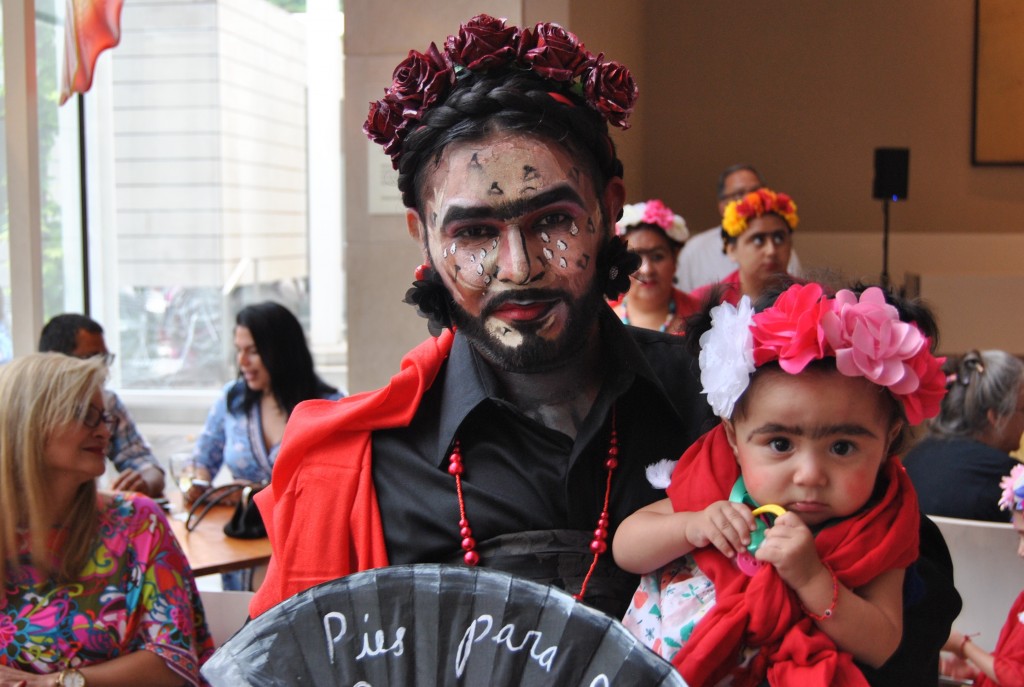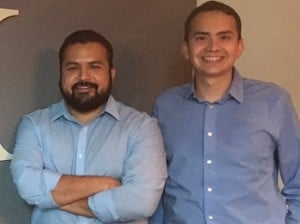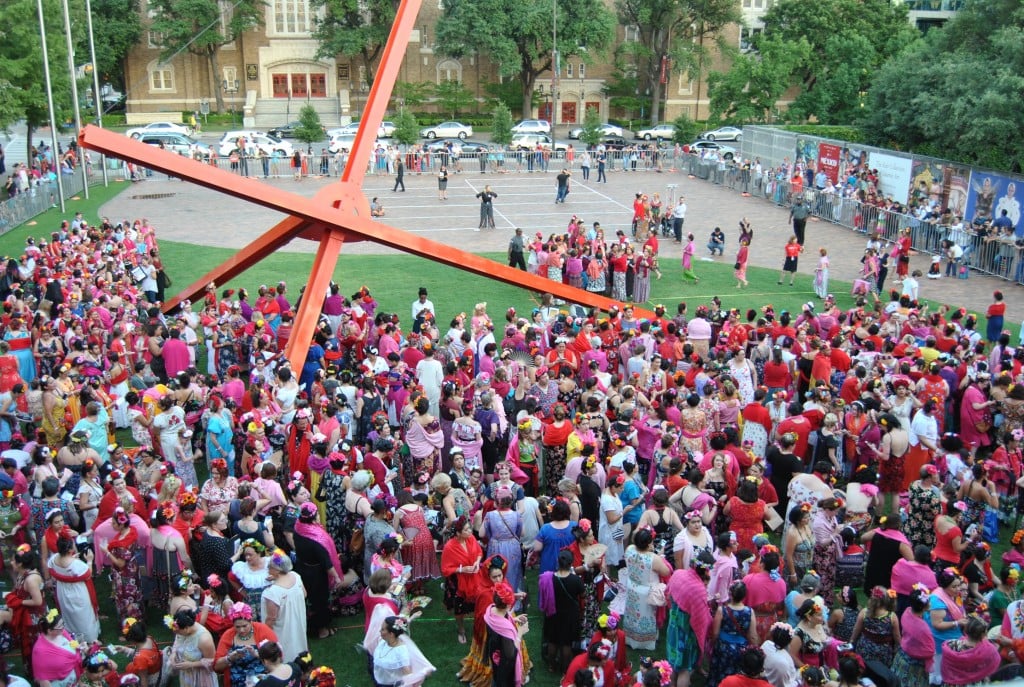State of the Arts: Meet The Two Dreamers Behind Frida Kahlo Look-Alike Contest
ArtandSeek.net August 25, 2017 14The Dallas Museum of Art is still waiting to hear whether this summer’s Frida Kahlo look-alike contest officially set a Guiness World Record.
There’s no disputing the crowd: More than 5,000 Frida wannabes showed up.
The reaction was beyond the wildest dreams of Jose Santoyo and Ramiro Luna, two so-called “Dreamers” who thought up the idea for the event. In our weekly State of the Arts conversation, I sat down with them to learn how immigration activism led them to art.
You can click above to listen to our conversation. Here are some excerpts:
Ramiro Luna on why dress up as Frida …. One of the main reasons was that I wanted to see people really embracing our community and our culture and no better way to do so than through an icon. Also, it played with gender dynamic roles. To me, I was like, what would be interesting would be to have people dress up as a heroine from our culture. Frida Kahlo. An icon. And I would love to see men do so as well. I personally put on a dress for the first time in my life. And to me it was just a very good, symbolic way of bringing not only different genders to celebrate an icon but different communities as well.

Marco Saucedo and his niece, Anna Mata, join attempt for a Guinness World Record. Photo: Miguel Perez
Jose Santoyo, on critics who said the contest was cultural appropriation…..Obviously we’re both Mexican, of Mexican origin, even though we grew up here in the US and this is where we’ve been most of our lives. This wasn’t a cultural appropriation. This was a cultural celebration and we wanted to bring everybody to come together to celebrate this culture.

Ramiro Luna and Jose Santoyo. Photo: Anne Bothwell
Luna on why busy DACA activists would take on an art project.…. To me it was therapy in a sense. Because it allowed me to take a moment away from politics. But it also was us fighting for the same thing, which is appreciation, acceptance. Through activism, our tool is consciousness – shifting the consciousness of people. I think art is a great way to bridge different ideas and understand that humanity is all the same.
Luna on why the Mexico show resonated so deeply…Honestly, I think it was, for one, the art. It was one of the most impressive collections we have seen brought to the United States. Also I think the timing was great. I think in this time in which there’s there’s so much misunderstanding of the Mexican community what great way to really understand our culture than through our art.
And lastly it was through a very strong marketing campaign. We were very deliberate in making sure young Mexican kids were going. To me that was my dream. To see somebody like my parents who haven’t seen their art in years, because they can’t. I, myself, can’t go to a museum and see a reflection of me in art. And this was one of my few opportunities to do so, so we wanted to make sure that, in our community, they took advantage of that.
On other art connections…. Santoyo: After graduating SMU, I never saw myself working in the arts like I’m doing now. [Santoyo is now doing marketing work with Cara Mia Theatre, as it prepares to tour the production, “Deferred Action.” ] I never expected to. Now that I get to learn about art every single day, and different forms of art, I think it’s also in many ways an escape from reality that we have to face, right? You turn on the news and you hear language being used against you, because of where you were born, because of your race or your gender. I think being able to bring people together, it gives you that gratifying feeling. And it also allows you to shelter yourself from all of the craziness we have to experience.
Luna: I never saw myself being as intricately involved with art. [Luna, who is studying psychology at UNT-Dallas, is more interested in politics.] But, as Jose mentioned, this is an amazing opportunity to [enjoy] an escape, and still be able to fight for what we’re fighting for through a different mode.

Frida Kahlo look-alikes at Dallas Museum of Art. Photo: Miguel Perez









